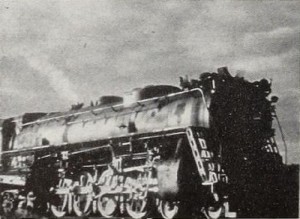
"Railroads Speed the Freights, filmed by T. W. Willard, is a compact industrial picture that presents its story with the maximum of effectiveness. The technique of operating our country's vast railway freight system is clearly summarized; the audience learns the methods employed in sorting, loading and routing freight cars and, in the process, sees some especially handsome movies of railroading. Particularly impressive are the dissolves from the shot of one moving freight train to another. Mr. Willard carefully studied the relationship of motion in the successive scenes and produced a sequence of dissolves, unmatched in cinematic effect. The series is climaxed by a scene of one train passing through the picture, which dissolves to a shot of another train racing almost head on toward the audience. The outstanding quality of this picture is its completeness and suavity, achieved with a minimum of footage and the smallest practical unit print charge." Movie Makers, Dec. 1942, 507.
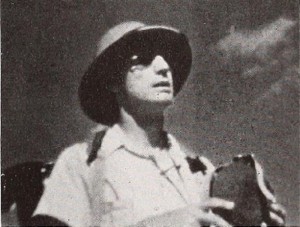
"Rainbow Fantasy, in the words of Charles C. Hammack, is "an attempt to produce — not a conventional travelog — but more a story of adventure, a hiking adventure to what is probably one of the least visited of our national monuments, Rainbow Bridge, in southeastern Utah." In achieving this goal, Mr. Hammack has been largely and creditably successful. For him and his young wife, Rainbow Bridge takes on the aura of a lost horizon, a Shangri La protected from the outside world by the blistering desert heat and the brutal desert rocks. He brings this overtone of feeling to his film, both through his imaginative camera treatment of the subject and the intentionally dramatic acting of the two travelers. Mr. Hammack's is a new name in Ten Best competition, but it is one which we believe will be heard again."Movie Makers, Dec. 1943, 478.
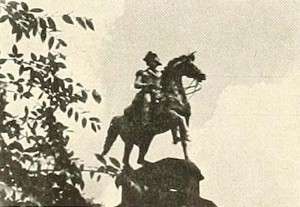
"To love a place so well that you can film it so well that the result becomes commercially sought is not the happy fortune of every movie amateur. Waldo E. Austin's Richmond Under Three Flags was paid for by the Morris Plan Bank of Virginia, in Richmond, and is distributed by the Virginia Conservation Commission. Here, a man of culture and a filmer of exceptional care and refinement has given us his own home, lovingly and interestingly presented, with a happy quota of cinematic ornaments. The pace of this accomplishment is leisurely, as was the Old South, yet its manner is modern, as is the new Richmond. In the title wordings, Mr. Austin is especially fortunate, avoiding banality on the one hand and '"fine writing" on the other, with just enough rhetoric to give the flavor of one of the country's most rhetorical centers. The interior scenes of public buildings have been accomplished with an apparent effortlessness that conceals a great deal of effort. Here is the publicity film in its most suave expression." Movie Makers, Dec. 1937, 627-628.
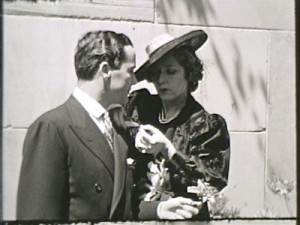
"Black-and-white home movie provides a tour of Rockefeller Center, including scenes of Mary Pickford and Buddy Rogers at a garden event." oldfilm.org
"Bert Seckendorf is at his best documenting interesting places and events of this land of ours, and in editing and titling such films to impart sustaining interest on the screen. In 'Romance of Gloucester' he has focused his camera on both the interesting places and much of the contemporary life of Gloucester. His discerning lens brings satisfying multi-scene sequences of activities of Gloucester natives, instead of the one-shot treatment so often accorded such material by the uninitiated cine filmer. Result is, one experiences something in viewing this picture on the screen. Seckendorf's photography is clear-cut, discerning, and shows good taste in composition." American Cinematographer, May 1952, 222.
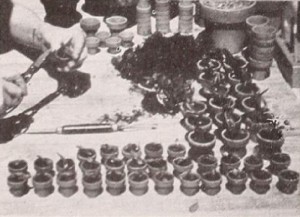
"A. M. Zinner has performed not only a labor of love in Romance of the Hybrid Orchid, but he has made an important contribution to the available information about orchid growing. Given the run of Shaw's Garden, the famous botanical park of St. Louis, he has traced the life of hybrid orchids from seed to full flowering, with especial study of the behind the scenes events in the hot beds and potting rooms. Outstanding is the section of the film devoted to the care and exact technique that must be used in handling seeds while they germinate. With this work of several years, Mr. Zinner takes his place in the ranks of significant amateur naturalists who have provided exhaustive records of some special field. In offering his carefully planned and detailed footage, Mr. Zinner also gives some very lovely flower pictures, including the rarest of the world's orchids. Beautiful camera work and expert sequencing mark the picture." Movie Makers, Dec. 1943, 474.
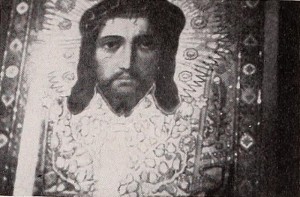
"Russian Easter is a reverent and impressive film of the celebration of Easter in the Russian Orthodox Church and in the homes of Russians living in this country, all presented against the background of the birth of spring. Easter in the Russian Church is more closely associated with the coming of spring than it is in some other faiths, and the antiphonal cry, "Truly Christ is risen!" finds its response in leafing trees, budding flowers and virescent hillsides. Accordingly, this is a joyful film, filled with the gladness of Easter and of spring. The rich liturgy of the Easter season in the Russian Church is presented with intelligently planned sequences that span the time from the beginning of Lent to three days after Easter. Interwoven are sequences of home life, as the household prepares for the celebration and the feast at Easter. So, the picture actually consists of three themes — Easter in the church, Easter in a private home and the coming of spring, all interrelated by a masterly handling of film planning and editing. Outstanding scenes in this picture are the shots of Church of Alexander Nevsky in the winter snow, looking like a color print of old Russia, and the shots of the dinner, after Easter services, when family and guests eat the traditional Easter dishes. This latter sequence has particular grace and charm. Mr. Serebrykoff has made a sincere and delightful film that bolsters one's faith in the future of amateur movie making, for he has produced a brilliant picture that could be made only by an amateur in the full and accurate sense of the word — a film that would have been profaned by professionalism." Movie Makers, Dec. 1942, 489.
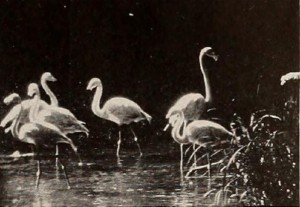
"By a clever editorial feat, Charles H. Benjamin has transformed a series of animal scenes which he filmed at New York City's Bronx Zoo into a pseudo travelog of the African game belt. He achieved this effect by simply cutting shots of heavily wooded streams into footage of the uncaged animals in the famous zoo, and the illusion is pointed up by some striking title frames. Mr. Benjamin's camera work matches his editorial insight, for his exposures and composition are first rate. His use of back lighting gives his shots of flamingoes and drowsing lions a brilliance that puts them far above the usual run of animal pictures." Movie Makers, Dec. 1946, 488.
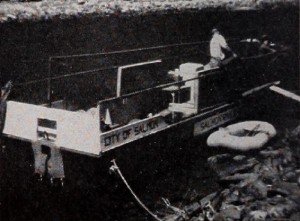
"Spanning the upper and narrower part of the State of Idaho from east to west, the Salmon River provides the original blueprint for one-way traffic. You either end up in western Idaho — or at the bottom of the river. Frank E. Gunnell ended up in Idaho. His coverage of this adventurous journey in The Salmon — River Of No Return is complete, carefully planned and splendidly competent. One becomes thoroughly familiar with the great, flat-bottomed barge, guided by giant sweeps fore and aft, in which the hazardous rapids of the Salmon are surmounted. One is charmed, even fascinated, by the deserted mining huts along the river and the few forlorn characters who still live amid this rocky wilderness. The Salmon — River Of No Return is a leisurely and well made record of a unique vacation adventure." Movie Makers, Dec. 1948, 492.
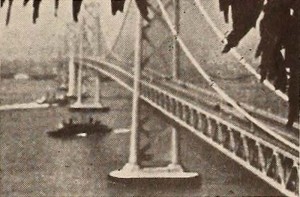
"To present, on 8mm. Kodachrome, where the problem of definition in distant shots is made more difficult by the greater screen enlargement in projection, a serious and satisfying architectural study of a structure that extends not a few hundred feet into the air, but thousands of feet horizontally, is a task that calls for skill in movie making. Raymond O'Connell, in San Francisco — Oakland Bay Bridge, has exhibited that skill and has to his credit, in this film, a definite accomplishment. The study is rendered comprehensible to the audience, at the very outset, by the use of a model of the bridge, which is introduced in the course of the picture, with excellent effect. In several instances, one passes from a shot of the model to another of the actual structure from the same angle, and so easily that it is possible to forget the cinematic labor put forth in finding a vantage point for the camera to show exactly what was needed. Of especial merit are shots of the changing pattern of the cables, made from a moving motor car, which provide a fine essay in abstract design." Movie Makers, Dec. 1938, 620.
Total Pages: 22